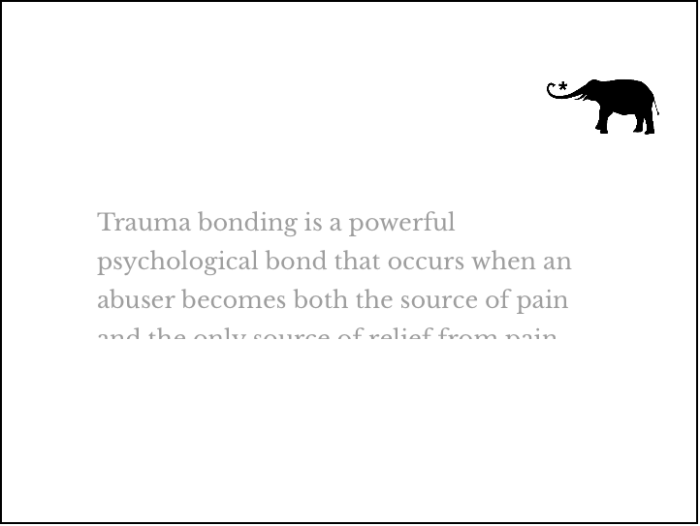No one is awful all the time. Not even abusers. It’s easy to think that if someone is abusive, they must be terrible all the time. But the reality is much more complicated. Abusers can be charming, loving, and even seem like the perfect partner or friend. This is why it can be so difficult to recognize when you’re in an abusive relationship. And it’s also why trauma bonding can be so powerful.
Trauma bonding is a psychological bond that forms between an abuser and their victim. It’s a complex process that can be difficult to understand, especially for those who haven’t experienced it firsthand. The bond is created when the abuser alternates between being loving and kind and being abusive. This creates a cycle of abuse that can be incredibly difficult to break.
In the beginning, a relationship with an abuser can feel like a fairytale. They are charming, attentive, and seem to be everything you’ve ever wanted in a partner. However, as time goes on, the incidents of abuse begin to increase. The time between incidents shortens, and soon, the abuse becomes a regular part of the relationship.
But it’s not just pain that you experience when you’re being abused. You also feel extreme gratitude when your abuser stops the abuse and turns on the charm once again. This creates a powerful psychological bond between you and your abuser. They become both the source of pain and the only source of relief from that pain.
If your abuser is a narcissist, like in my case, they will also gaslight you. Gaslighting is a form of emotional abuse in which the abuser manipulates their victim into questioning their own memory, perception, or sanity. After an incident of abuse, they will pretend it never happened. They may act like you’re crazy, silly, or overreacting. They might reference the unrelated nice things they’ve done for you as if those things prove they would never abuse you, or they might simply deny that the abuse occurred altogether. I remember catching my abuser sending explicit sexual content to another woman, seeing it with my own eyes, taking a photo, and he would deny it happened while looking at the evidence. He would subsequently delete photos, screenshots, and conversations to support his later arguments that it never happened.
This type of behavior typically occurs when there are no witnesses, and the abuser, being an extremely skilled manipulator, uses all of the tools at their disposal to make you question and dismiss your reality. It’s a form of psychological warfare that can be incredibly damaging to your mental health.
Trauma bonding can occur in any type of relationship, whether it’s romantic, familial, or even professional. It’s not limited to physical abuse, either. Emotional abuse can be just as damaging, and it can create the same type of psychological bond between abuser and victim.
If you’re in an abusive relationship, it’s important to seek help. Breaking the cycle of abuse can be incredibly difficult, but it’s not impossible. There are resources available to help you, whether it’s through therapy, support groups, or a trusted friend or family member.
In conclusion, trauma bonding is a powerful psychological bond that forms between abusers and their victims. It’s a complex process that can be difficult to understand, especially for those who haven’t experienced it firsthand. If you’re in an abusive relationship, it’s important to seek help and break the cycle of abuse. Remember, you deserve to be treated with love and respect, and you have the power to make positive changes in your life.












Read 0 comments and reply